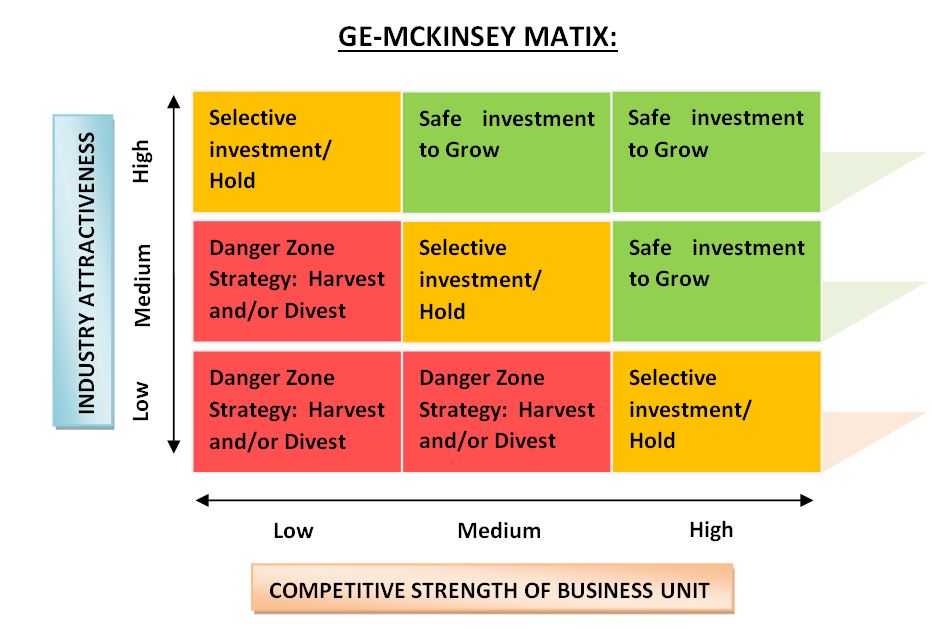In the dynamic landscape of business, strategic planning is the compass that guides companies toward success. One integral aspect of this planning process is product management, and the GE McKinsey Market Attractiveness Model stands as a beacon for businesses seeking to navigate their way through the complexities of market dynamics.
Understanding the GE McKinsey Market Attractiveness Model
At its core, the GE McKinsey Model is a strategic tool designed to assist companies in managing their product portfolios effectively. By evaluating both the market attractiveness and the competitive strength of each product, businesses can make informed decisions on resource allocation, prioritize investments, and chart a course for sustainable growth.
The Strategic Steps: Navigating Your Product Portfolio
- Assess Market Attractiveness:
Begin by evaluating the market demand for each product. Understand the dynamics of the market, including growth potential, customer needs, and overall industry trends. The goal is to identify products that align with market opportunities and possess the potential for long-term success.
- Evaluate Competitive Strength:
Examine the competitive landscape for each product. Assess factors such as brand strength, technological capabilities, and market share. Understanding the competitive position of each product allows you to identify areas of strength and weakness, providing a foundation for strategic decision-making.
- Place Products on the Matrix:
Place each product on the GE McKinsey Matrix, which consists of a 9-box grid. The vertical axis represents market attractiveness, while the horizontal axis represents competitive strength. This matrix visually categorizes products into segments like ‘Stars,’ ‘Cash Cows,’ ‘Question Marks,’ and ‘Dogs,’ guiding your focus on each product category accordingly.
- Analyze Extracted Information:
Analyze the information derived from the matrix placement. Products falling into the ‘Stars’ quadrant may require heavy investments to capitalize on their high growth potential, while ‘Cash Cows’ might benefit from strategies to maintain and maximize profitability.
- Chart Future Directions:
Based on the analysis, outline the potential or future directions for each product. Identify opportunities for innovation, expansion, or divestment. This step is crucial for aligning your product portfolio with the ever-evolving market dynamics.
- Prioritize Investments:
The final step involves prioritizing investments. Allocate resources based on the strategic positioning of each product. This ensures that financial and human capital are channeled towards initiatives that promise the highest returns and align with the overall business strategy.
Conclusion: Navigating Success Through Strategic Insight
The GE McKinsey Market Attractiveness Model serves as a compass, providing businesses with a systematic approach to managing their product portfolios. By aligning market dynamics with strategic decision-making, companies can not only survive but thrive in an ever-changing business landscape. As you embark on the journey of product management, let the GE McKinsey Model be your guide to charting a course toward sustained growth and success.


